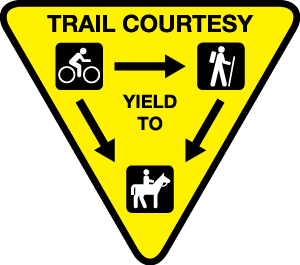Genesee Valley Greenway State Park

Genesee Valley Greenway State Park
1 Letchworth State Park
Castile, NY 14427
- General Information: (585) 493-3614

Know Before You Go: Please check the Detours page for updates and the agency's trail tips page.
The Genesee Valley Greenway State Park is a 90-mile open space corridor that follows the route of the Genesee Valley Canal (1840-1878) and the Pennsylvania Railroad Rochester Branch (1882-1963) from the Erie Canalway Trail in Rochester's Genesee Valley Park to the Village of Cuba in Allegany County. The Greenway will eventually extend to Hinsdale in Cattaraugus County.
It includes a public, multi-use trail and natural and historic resources. The majority of the trail is an old railway bed that is a straight, level surface consisting of cinders, gravel and mowed grass. The Greenway passes through woodlands, wetlands, river and stream valleys, rolling farmlands, steep gorges, and historic villages in sixteen towns located in Monroe, Livingston, Wyoming, Allegany, and Cattaraugus counties.
Like other abandoned towpaths and rail beds across the country, the Genesee Valley Greenway provides opportunities for public recreation, an off-road link to communities, parks, other trails, attractions in the region and preservation of open space and the natural and cultural resources in the corridor. The GVG connects to the Genesee River Trail, Finger Lakes Trail, Erie Canal Recreation Way, the Erie Attica Trail and the Lehigh Valley Trail.
Historical Features:
- Chili, Monroe County and Oakland, Livingston County Location: Old railway bridges and bridge abutments.
- Oakland: Locks
- Interpretive Signage is provided along the trail at key locations.
Pet Policy: A maximum of two pets are allowed in day use areas unless prohibited by sign or directive. Pets are to be supervised at all times and either be crated or on a leash not more than 6-feet in length. Proof of rabies inoculation shall be produced if requested by staff. Pets are not permitted in playgrounds, buildings, golf courses, boardwalks, pools and spray-grounds or guarded beaches (this does not apply to service animals).
Hours of Operation
Park is open year round.
Hours of Operation: 6 am - 10 pm, daily.
*Park hours and facility operations are subject to change. Patrons are encouraged to contact the park directly to confirm operating hours before traveling.
Land Usage History
- Leave no trace. Do not litter and leave rocks, plants and other natural objects as you find them.
- Let nature's sounds prevail. Avoid loud voices and noises. Respect other visitors and protect the quality of their experience.
- Be courteous. Yield to other users on the trail.
- All trail users must yield to horses.
- Cyclists must notify hikers before passing from behind.
- Snowmobiles must yield to all other trail users.
- Observe wildlife from a distance. Do not follow or approach them. Never feed animals.
- Camping is not permitted in the park.
- Park hours are 6 am to 10 pm.
Tuesday, October 14, 2025 02:00 PM - 05:00 PM
Genesee Valley Greenway State Park
Friday, October 17, 2025 02:00 PM - 04:00 PM
Genesee Valley Greenway State Park
Wednesday, October 22, 2025 01:00 PM - 05:00 PM
Genesee Valley Greenway State Park
Thursday, October 30, 2025 01:00 PM - 04:00 PM
Genesee Valley Greenway State Park
Saturday, November 1, 2025 10:00 AM - 01:00 PM
Genesee Valley Greenway State Park
Amenities Information
- Amenities
- Biking
- Equestrian Trails
- Fishing
- Hiking
- Snowmobiling * *Permitted in designated areas only.
- Snowshoeing/X-Country Skiing
- Tours
- Documents
- Genesee Valley Greenway State Park Action Plan, Pages 1-15 (pdf)
- Genesee Valley Greenway State Park Action Plan, Pages 16-64 (pdf)
- Genesee Valley Greenway State Park Action Plan, Pages 65-96 (pdf)
- Genesee Valley Greenway State Park Action Plan, Pages 97-135 (pdf)
- Genesee Valley Greenway: Detours 2025 (pdf)
- Resources
- Allegany County
- Cattaraugus County
- Finger Lakes Trail Conference
- Genesee Valley Greenway Management Plan
- Letchworth State Park
- Livingston County
- Livingston County Tourism
- Monroe County
- Wyoming County
- Wyoming County Tourism
- Western NY Wilds
- Explore Genesee Valley
- 2025 Calendar of Free Guided Outings Autumn
